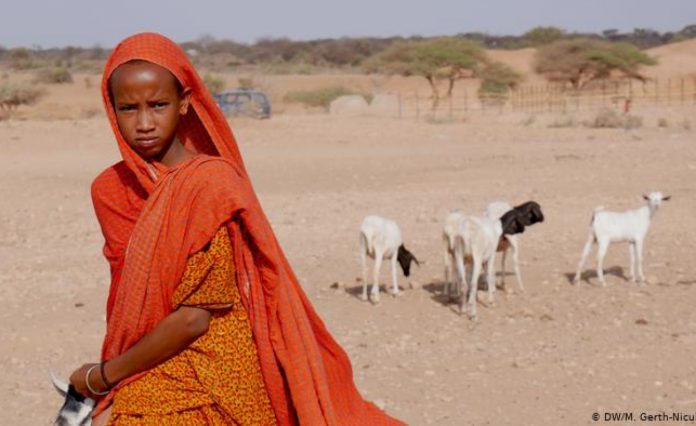By Maria Gerth-Niculescu
This year the ‘belg’ rainy season once again failed to bring much-needed relief to the drought-stricken region. Pastoral communities say they fear for the future of their livelihoods as experts blame climate change.
Three times a day, Sara Saban walks under the burning sun to fetch water for her family. Close to her village in the center of Ethiopia’s Somali Region, women, children and men line up in front of the only available well within walking distance. Their donkeys patiently wait as they fill their yellow jerry cans with water. A few meters away, others dig a hole in the dried-out riverbed to collect what little murky water they can find.
“The underground water is very limited because we are facing a drought,” Sara, a mother of ten, told DW. “The water quality is also very bad, so sometimes we suffer from stomach-related illnesses.”
Livestock dwindling
The Somali Region has suffered from chronic drought for several years, with the worst stretch recorded in 2016, from which many households have yet to recover. This year the short rainy season known as the ‘belg’, which typically lasts from March to May, once again failed to provide much-anticipated ground water. The livestock have already started to die.
This has had catastrophic consequences for the pastoral communities which make up the majority of the Somali population. They rely on cattle and other farm mammals for their livelihood: Selling them at the market, drinking their milk and eating their meat.
Since the beginning of the year, Sara lost one cow, 20 goats and five sheep. “It rained for only five days, and they were very small showers, so the grass did not grow enough to feed the livestock,” she explains.
Assistance not always enough
To counter the effects of the drought, the Ethiopian government has to rely of the help of NGO’s and the United Nations (UN). The Food and Agriculture Organization of the United Nations (FAO) recently distributed livestock medicine and feed to 79,000 households. But it’s still not enough for everybody.
“We don’t have the capacity to respond [to drought] at the government level,” Tahir Beder Farah, the livestock officer for the Lasdenkeyre district, told DW. “We have our own resources but the drought impact is huge and the feed price is very high. So although we have our own [response] plan, that plan is not enough for our community.”
During prolonged periods of drought, animals become more vulnerable to diseases. Herds mingle more as water sources are scarce, increasing the risk of contagion. Swift and adequate treatment of their livestock becomes a priority for farmers.



